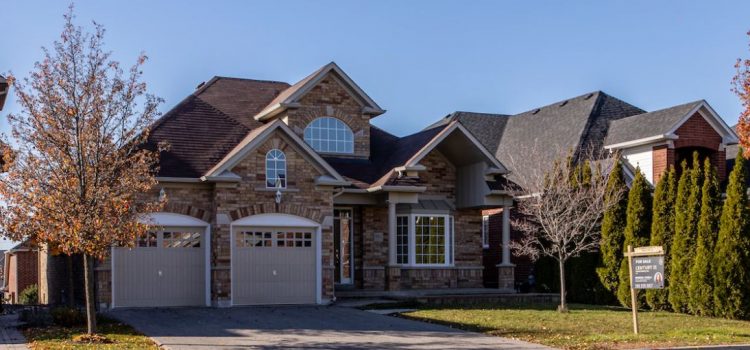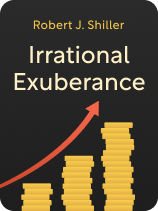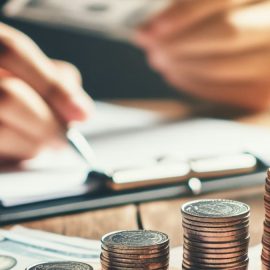

This article is an excerpt from the Shortform book guide to "Irrational Exuberance" by Robert J. Shiller. Shortform has the world's best summaries and analyses of books you should be reading.
Like this article? Sign up for a free trial here.
What does a speculative bubble look like? What are some examples of speculative bubbles?
Speculative bubble examples can be found in US stock, housing, and bond markets throughout history. If you know what a speculative bubble looks like, you can help prevent stock market crashes in the future.
Learn what a speculative bubble is from these three examples.
Speculative Bubbles in Investing Markets
A speculative bubble arises whenever news about an asset’s price increase generates further price increases as investors learn about the initial increase and become overly optimistic. These subsequent increases are a byproduct of investors’ zeal about previous increases rather than a result of concrete information about the asset’s true value.
(Shortform note: According to economist Hyman Minsky, the lifespan of speculative bubbles has five key stages. First, investors become optimistic because of some financial development, such as a new product release. Then, prices start to rise as more people invest to avoid missing the boom. Afterward, momentum carries prices even higher, and some investors decide to cash out because they believe the bubble is about to burst. Finally, other investors begin to panic as the price begins to drop, spurring widespread selling that effectively bursts the bubble.)
We’ll dig deeper into the rationale for thinking that speculative bubbles occasionally take root in the US stock, housing, and bond markets. In each of these markets, we witness price increases that aren’t justified by concrete economic developments and therefore must stem from speculation.
1. Speculation in the US Stock Market
To show how speculative bubbles affect stock markets, let’s examine the dotcom boom in the late 1990s, during which sharp increases in stock prices outstripped companies’ economic gains and price-earnings ratios soared to record highs.
The dotcom boom was the culmination of 18 years of unprecedented growth in the US stock market between July 1982 and August 2000. Between these dates, the US stock market increased 7.7-fold when adjusted for inflation. Moreover, between 1994 and 2000 alone, the stock market tripled in value. This increase should have been accompanied by proportionate economic growth if it wasn’t the product of a speculative bubble. But no such growth occurred: Between 1994 and 2000, for example, US corporate profits increased only 60% and the gross domestic product (GDP) increased 40%, even though stock prices tripled in that same timeframe.
(Shortform note: Historically, the S&P 500 has had a strong positive correlation with US GDP. According to experts, the correlation between the two was 0.958 (on a scale from -1 to +1) between 1960 and 2020, meaning that variation in the S&P 500 was very closely linked with variation in US GDP in this timeframe. Viewed through this lens, the disparity between the growth of the S&P 500 and US GDP between 1994 and 2000 is especially anomalous.)
As further evidence of a speculative bubble, we can look at the S&P 500’s cyclically adjusted price-earnings ratios (CAPE ratios) in 2000. CAPE ratios, he explains, are equal to a stock index’s current market price divided by its average inflation-adjusted earnings per share over the last 10 years. For example, in June 2021, the S&P 500 was priced at $4,259 and the average inflation-adjusted earnings per share was $116, meaning that the CAPE ratio was 36.7 (because 4,259 divided by 116 equals 36.7). More simply, CAPE ratios provide a measure of how much investors are willing to pay for each dollar that companies earn. If they’re willing to pay more for each dollar of earnings, that suggests a higher degree of speculation.
(Shortform note: CAPE ratios are a modification of standard price-earnings (P/E) ratios—a company’s share price divided by its earnings per share over the previous year. CAPE ratios have two advantages over standard P/E ratios: First, by considering the share price over the past 10 years, they smooth out sharp fluctuations that occur on a yearly basis, and second, they ensure that years with abnormal inflation rates don’t lead to distorted P/E ratios.)
On March 24, 2000, the S&P 500’s CAPE ratio hit 47.2, which was an all-time high. This record high indicates that stock market investors were paying unprecedented stock prices relative to companies’ earnings, a surefire sign of speculative trading. Because of this unparalleled CAPE ratio, the dotcom boom was considered a speculative bubble—one that burst shortly thereafter, with the S&P 500 losing about half of its value by 2003.
(Shortform note: For context, the S&P 500’s average CAPE ratio since 1950 has been 20.2 with a standard deviation of about 8. As of September 2023, the S&P 500’s CAPE ratio remains above-average at 31, suggesting that the stock market may still be overvalued because of high speculation.)
2. Speculation in the US Housing Market
Speculative bubbles aren’t restricted to the stock market. On the contrary, a speculative bubble drove the unprecedented growth in the US housing market between the late 1990s and 2006, as shown by sharp increases in housing prices that aren’t explained by underlying economic factors.
Between 1997 and 2006, inflation-adjusted home prices in the US increased 85%. Although this pales in comparison to the stock market’s increase leading up to 2000, it’s remarkable relative to long-term trends in the housing market— inflation-adjusted home prices in the US only increased an average of 0.3% annually between 1890 and 2014.
(Shortform note: According to experts, various cities worldwide are in the midst of housing bubbles that rival the US’s housing bubble in 2006. For example, Toronto has seen inflation-adjusted housing prices triple between 1998 and 2023, suggesting a housing bubble might be forming.)
Much like the stock market, if this rapid uptick in housing prices weren’t the product of speculation, we’d expect to find an alternate economic cause. But no such cause has been found. For example, one popular explanation is that the price increases were driven by rising populations. Against this narrative, the US population has increased steadily since the 1890s, with no surge between 1997 and 2006, meaning population growth can’t be the cause of the housing market boom. Another common explanation is that rising construction costs were responsible for the housing boom, but inflation-adjusted construction costs have also remained consistent over the past century.
(Shortform note: Although rising populations and construction costs are two possible factors driving housing prices, experts caution that housing prices are sensitive to a wide range of additional factors. For instance, government policies that provide tax breaks to homeowners can increase demand and thus inadvertently increase housing prices. Demographic changes can also affect the housing market by, for example, creating an increased number of retirees seeking vacation homes in desirable locations.)
The lack of a strong alternate explanation as evidence that the housing market boom was driven by speculation. What’s more, this boom came crashing down after 2006, with inflation-adjusted housing prices in 2013 nearly equivalent to those in 1997.
(Shortform note: It’s possible that the US is currently in the midst of another housing bubble: Since reaching a low in 2012 and 2013, inflation-adjusted US housing prices were actually 7% higher at the start of 2023 than they were at their peak in 2006, according to Robert Shiller’s US National Home Price Index.)
3. Speculation in the US Bond Market
Finally, let’s consider one additional investing market with hints of a speculative bubble: the US bond market. Speculation has influenced long-term bond yields, noting that the concrete economic factors that should ground these yields (namely, future inflation rates) cannot account for sharp fluctuations in them.
(Shortform note: Bond yields are the annual return promised to investors who purchase bonds, expressed as a percentage of the bond price. For example, if you bought a $1,000 one-year Treasury bond with a 4.5% bond yield, you would receive $1,045 at the end of the year.)
For investors, the primary reason to invest in long-term bonds is to shield their money against inflation. For example, if inflation averaged 3% annually between 2010 and 2020, then an investor who purchased a 10-year government bond in 2010 yielding 3% annually has guaranteed that they’ll have the same purchasing power in 2020 as they did in 2010. So we should expect bond yields to correspond roughly with future inflation rates, if these yields are rationally priced.
But the opposite is true: There’s almost no statistically significant correlation between future inflation rates and long-term bond yields between the late 1800s and now. The lack of correlation between bond prices and future inflation rates suggests that non-rational, speculative considerations may be driving bond prices.
(Shortform note: The argument that future inflation rates should correlate with long-term bond yields assumes that it’s possible to accurately predict future inflation rates. But some experts contend that future inflation rates are nearly impossible to predict, which calls this argument into question. After all, if it’s impossible to determine future inflation rates, then seeing bond yields depart from future inflation rates wouldn’t necessarily mean that bond markets are irrational.)

———End of Preview———
Like what you just read? Read the rest of the world's best book summary and analysis of Robert J. Shiller's "Irrational Exuberance" at Shortform.
Here's what you'll find in our full Irrational Exuberance summary:
- That financial markets are rife with speculation
- The three key US financial markets where speculative bubbles have formed
- Recommendations to financial leaders and the public for mitigating bubbles






